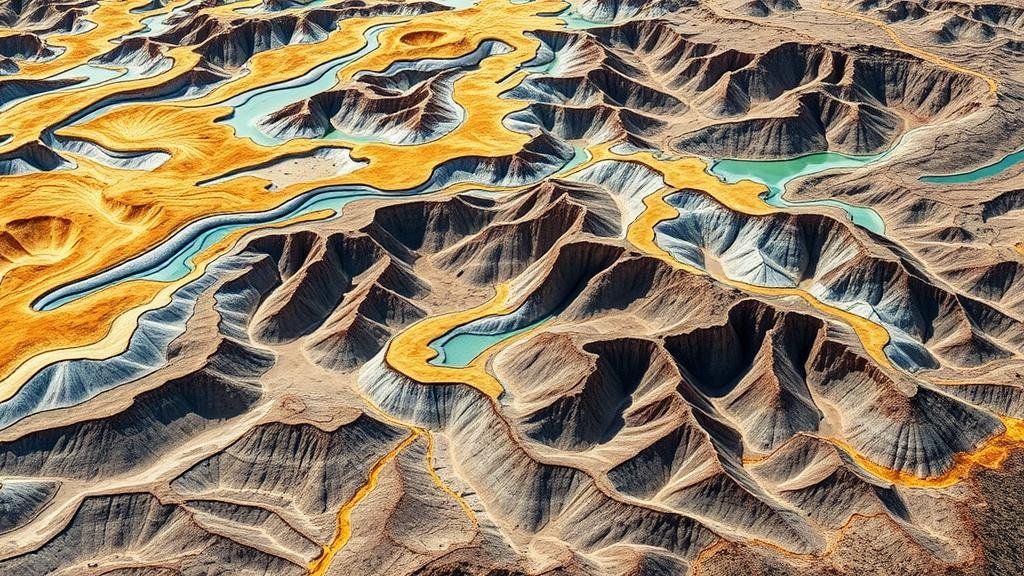The Science Behind Erosion Patterns in Gold Deposition Areas
The Science Behind Erosion Patterns in Gold Deposition Areas
Erosion is a natural geographic process that shapes landscapes, redistributing soil and minerals. In gold deposition areas, understanding erosion patterns is vital for predicting gold distribution, mining operations, and environmental impact. This article explores the complex interplay of geological and hydrological factors that lead to unique erosion patterns in areas rich in gold deposits.
Understanding Erosion
Erosion can be defined as the process by which soil and rock are worn away and transported by natural forces such as wind and water. This process is crucial for shaping topography and redistributing minerals, including precious metals like gold. Different types of erosion–surface erosion, gully erosion, and fluvial erosion–each play a role in how gold is deposited over time.
Types of Erosion Influencing Gold Deposits
Three primary types of erosion significantly influence the conditions that lead to gold deposition:
- Surface Erosion: Caused by rainfall and runoff, surface erosion removes the fine sediment from the land, allowing heavier minerals like gold to settle in lower-lying areas.
- Gully Erosion: This occurs when surface water removes soil along a slope, forming deep channels. Gold particles can accumulate at the base of these channels where water flow decreases.
- Fluvial Erosion: In rivers and streams, water flow can erode banks and carry sediments downstream, concentrating heavy minerals, including gold, in certain locations often referred to as pay zones.
Factors Affecting Erosion Patterns
Several interrelated factors dictate the erosion patterns in gold deposition areas:
- Geology: The composition of the rocks and soil plays a significant role in how easily they erode. Areas with hard rock formations may experience slower erosion compared to softer sedimentary rocks.
- Topography: The slope and height of the land affect the speed of water flow and erosion intensity. Steeper slopes often lead to increased erosion rates and concentration of gold deposits.
- Climate: Regions with heavy rainfall often experience more severe erosion due to increased runoff. On the other hand, arid climates might exhibit slower erosion but can also lead to wind erosion.
Case Studies of Gold Deposition and Erosion Patterns
Several case studies exemplify the relationship between erosion patterns and gold deposition:
- The Klondike Gold Rush, Canada: During this historic gold rush, miners discovered rich deposits in areas shaped by several glacial and fluvial erosion processes. erosion of glacial till created alluvial deposits where gold could settle, leading to significant discoveries.
- Sierra Nevada, California: Gold found in the Sierra Nevada foothills is often concentrated by the weathering of metamorphic rocks followed by fluvial processes. The interplay of steep mountainous terrain and flowing rivers has resulted in rich concentrates of gold nuggets.
Implications for Mining and Environmental Management
Understanding the erosion patterns in gold deposition areas has practical implications for both mining operations and environmental management. Effective mining strategies often rely on predicting these patterns to identify pay zones, thus optimizing mineral extraction. On the other hand, recognizing erosion can aid in developing environmental protection plans to mitigate sediment runoff and preserve ecosystem integrity.
Conclusion and Actionable Takeaways
In summary, the science behind erosion patterns in gold deposition areas reveals a complex interaction of geological, topographical, and climatic factors. To harness this knowledge effectively, stakeholders in the mining industry should consider the following actionable takeaways:
- Conduct geological assessments to determine rock composition that influences erosion.
- Use erosion modeling to predict sediment transport and identify potential gold deposition sites.
- Use sustainable mining practices that account for environmental impacts due to erosion.
Through a comprehensive understanding of erosion science, mining operations can optimize resource extraction while minimizing ecological consequences, contributing to a balanced approach to natural resource management.



